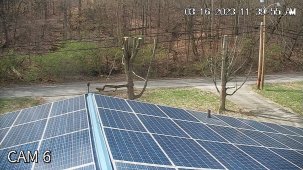sunshine_eggo
Happy Breffast!
3/23/23 EDIT: Will posted some interesting results:

 diysolarforum.com
diysolarforum.com
I'm thinking series is better. Here's why:
Typical 60 cell panel with bypass diodes:

I think everyone can accept that this panel will lose 1/3 of its output when the cell is shaded. This isn't just a current loss, it's a voltage loss as well.
For easy numbers, let's say this panel is a 300W 60 cell with 36Voc/30Vmp and 10A Imp.
Thus this panel will drop to 24Voc/20Vmp and 10A Imp when the cell is shaded.
What happens if this is in parallel with another identical panel @ 30Vmp/10A?
Well, like batteries, panels have to be at the same voltage when in parallel, so the only way you'll get ANYTHING out of the shaded panel is if the array is below 24V with optimal at 20V.
Assuming max power, the moment the cell is shaded, power drops from 600W to 300W.
The MPPT tries to pull more current and finds that it can get max output of 400W at 20Vmp. Yes, this will actually be a LITTLE higher than 400W because the unshaded panel will output a little more than Imp, but I'm ignoring that since I don't know what the number will be, but certainly somewhere between Imp and Isc.
So, partial shading of ONE panel effectively kills the same amount on any parallel panel due to array voltage lose.
HOWEVER, if the two panels are in series, only the single section of the shaded panel is lost. So instead of getting 10A @ 60Vmp, you're getting 10A @ 50Vmp or 500W.
This suggests to me that series is better for partial shading than parallel.
Am I missing something? I ran some tests on my neighbors 2S3P array, and the results are consistent with ALL panels outputting as though they were shaded in the same way.
@RCinFLA
@Hedges

Series string shading summed up in 4 pictures
Each row is a string. These two strings of panels are in parallel and connected to victron MPPT. You can see that the last panel is shaded: 420VDC. So plenty of voltage and the last panel in the string is shaded, but only producing 200W for both strings! Now wait 30 minutes.. The shading...
I'm thinking series is better. Here's why:
Typical 60 cell panel with bypass diodes:

I think everyone can accept that this panel will lose 1/3 of its output when the cell is shaded. This isn't just a current loss, it's a voltage loss as well.
For easy numbers, let's say this panel is a 300W 60 cell with 36Voc/30Vmp and 10A Imp.
Thus this panel will drop to 24Voc/20Vmp and 10A Imp when the cell is shaded.
What happens if this is in parallel with another identical panel @ 30Vmp/10A?
Well, like batteries, panels have to be at the same voltage when in parallel, so the only way you'll get ANYTHING out of the shaded panel is if the array is below 24V with optimal at 20V.
Assuming max power, the moment the cell is shaded, power drops from 600W to 300W.
The MPPT tries to pull more current and finds that it can get max output of 400W at 20Vmp. Yes, this will actually be a LITTLE higher than 400W because the unshaded panel will output a little more than Imp, but I'm ignoring that since I don't know what the number will be, but certainly somewhere between Imp and Isc.
So, partial shading of ONE panel effectively kills the same amount on any parallel panel due to array voltage lose.
HOWEVER, if the two panels are in series, only the single section of the shaded panel is lost. So instead of getting 10A @ 60Vmp, you're getting 10A @ 50Vmp or 500W.
This suggests to me that series is better for partial shading than parallel.
Am I missing something? I ran some tests on my neighbors 2S3P array, and the results are consistent with ALL panels outputting as though they were shaded in the same way.
@RCinFLA
@Hedges
Last edited:



